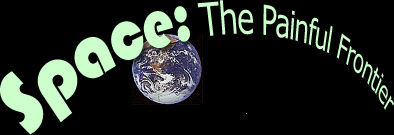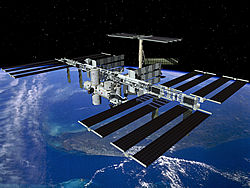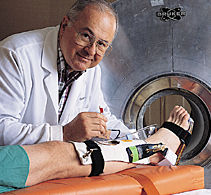
Part Two - Space Travel Goals: Bring 'Em Back Alive
Scientists and astronauts say they have no doubt that we can figure out a way to travel in space. It was only decades ago that experts said the body would disintegrate in zero gravity, or if pushed to the speed of sound.
"By and large, all the effects of space travel so far seem to be reversible. But we need to know a lot more before we send anyone to Mars. We don't want someone to arrive on Mars and then collapse. We want them to come back, and we want them to come back alive," says Dr. Martin Kushmerick, a UW professor of radiology, bioengineering, physiology and biophysics, and head of the UW space medicine team.
Consider what happened to astronaut David Wolf, who spent four months on the Russian space station Mir in 1998. Back on Earth, Wolf quickly realized that if he tried to turn a corner, his ankle would simply roll under him, recalls Michael Anderson, '81, one of the astronauts who brought Wolf home. The muscles that link something as basic as our foot and leg had atrophied. Wolf spent many weeks in rehabilitation, such as a swimming pool that helped support his newly regained weight. He later told TV viewers, "It feels like a house has been dropped on you at first."

Artist's rendering of the completed International Space Station in 2006. Image courtesy of NASA.
"The muscles and nerves have to relearn the language of gravity," explains Yvonne Darlene Cagle, '85, an astronaut who got her M.D. from the UW School of Medicine.
With a mission to Mars, we will expect astronauts to travel perhaps six months in zero gravity, and then land on a planet with about one-third of Earth's gravity. True, a 200-pound person would weigh only 74 pounds on Mars. But that is enough to strain someone who's been living in no gravity and then has to put on a heavy spacesuit and perform strenuous explorations. This person would then have many months of zero gravity in a spaceship before returning to the gravity of Earth.
"The challenge is that on Mars, you won't be landing someplace where organized medical staff can put you through a sophisticated rehabilitation program," says astronaut Bonnie Dunbar, '71, '75, one of seven UW alumni who have flown in space.
Kushmerick says what goes for people on Earth goes for astronauts as well: your odds of staying healthy are better if you exercise. Healthy muscles make for a healthy person. Anderson took 45-minute stationary bicycle rides on his trip into space, pedaling to the sounds of Acoustic Alchemy, Earl Klugh and gospel music. The Russians developed something called the "penguin suit" that has proven partially effective. It's an all-body suit that is filled with powerful bungee cords. If the astronaut does not resist, he or she snaps into a fetal position. You have to exert force to assume a normal posture and wear it during your daily routine—just as you exert force every day under gravity. However, the suit is not a big hit with astronauts and only seems to partially solve the degeneration problem, Kushmerick says.

Professor Martin Kushmerick, head of the UW space medicine team, tests the muscles in a patient's leg. Photo by Kathy Sauber.
One intriguing idea is to have at least partial gravity on the flight to Mars—scientists are looking for ways to accomplish that as well.
"Arthur C. Clarke may have had the right idea all along," Kushmerick says, referring to the science fiction author who's written of ships with artificial gravity. But science fiction does not need to count the practical costs of such a design, which at present would be enormous.
Overall, there are four big issues facing long-term space flight, says the space medicine institute's associate director, Ronald White. Those are radiation, psychological issues, musculoskeletal degeneration and what to do in case of illness or injury.
Some other conditions are a little less understood; we know astronauts return from long trips with depressed immune systems, but we do not know why.
We do know that space travelers don't have Earth's geomagnetic field to protect them from galactic cosmic rays and solar radiation. One might think the answer is to put up a shield, like the lead used when we get an X-ray. But in space, this cure is actually worse than the problem. Heavy ion particles would hit the shield and generate secondary particles that would fill the spacecraft and penetrate through the crew's suits and bodies.
The solution might include a special sort of shield or treatment. This could have a big benefit on Earth as well. Currently, radiation therapy for cancer kills not only the tumors but also healthy tissue. It would be wonderful for cancer patients if science could find a way to protect the healthy tissue with these types of shields.
The psychological issues are a little trickier to put your finger on. A mission to Mars might involve two years of isolation. That's an awfully long time to be cooped up with a few other people in a small room, with no place to go for a 'time out' or escape. So scientists are studying how they can screen and evaluate candidates for the mission to minimize any problems in advance.
This is typical of the approach to space medicine, which emphasizes trying to solve problems before they start. "It's really the same in space as it is on Earth: prevention is the key," physician/astronaut Cagle says.
Go To: Page 1 | Page 2 | Page 3 | Page 4
- Sidebar: From Fiction to Fact: Space Station Alpha
- Return to March 2001 Table of Contents